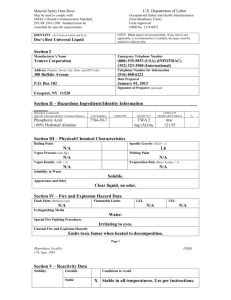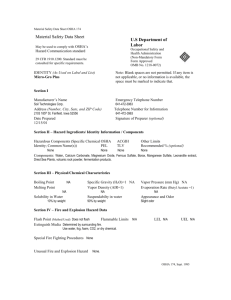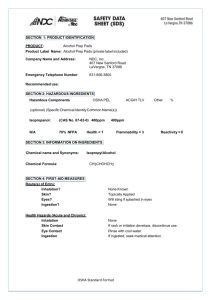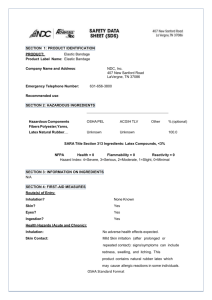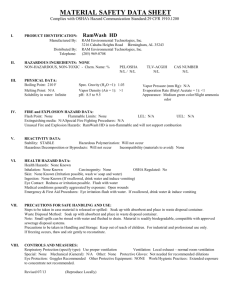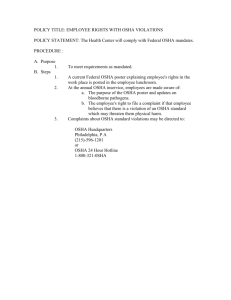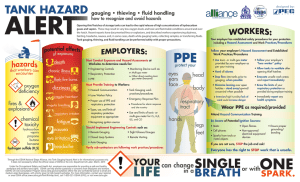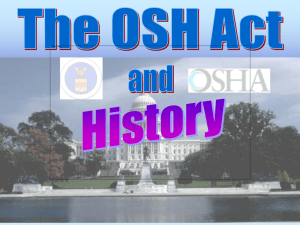OSHA Regulation and Training Requirements
advertisement
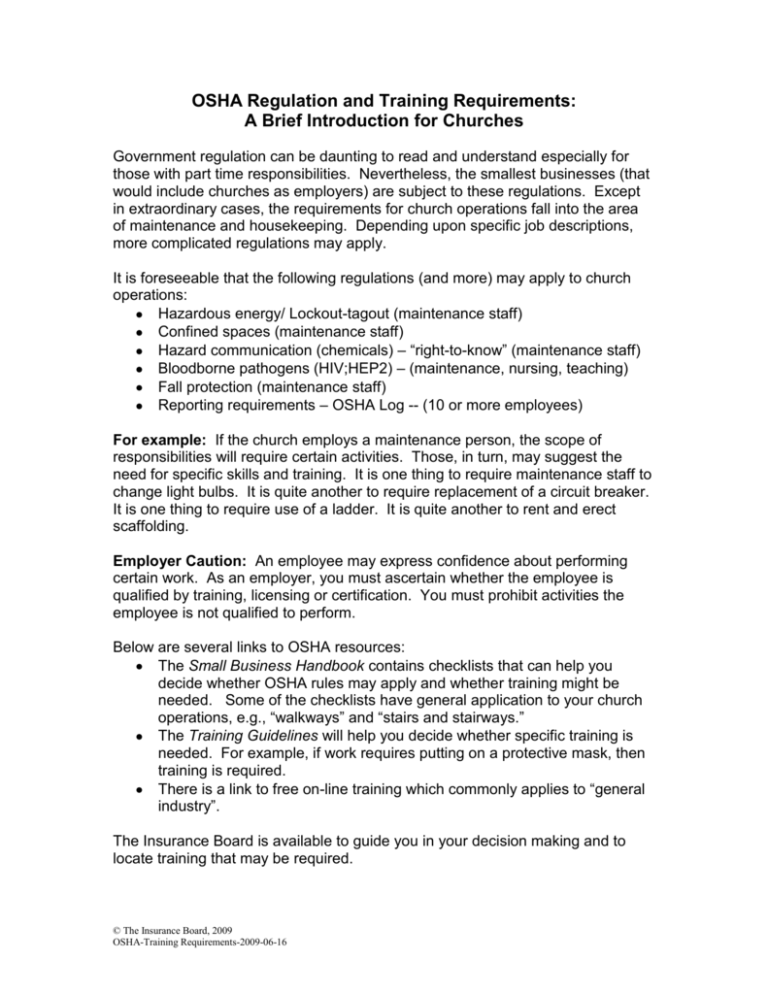
OSHA Regulation and Training Requirements: A Brief Introduction for Churches Government regulation can be daunting to read and understand especially for those with part time responsibilities. Nevertheless, the smallest businesses (that would include churches as employers) are subject to these regulations. Except in extraordinary cases, the requirements for church operations fall into the area of maintenance and housekeeping. Depending upon specific job descriptions, more complicated regulations may apply. It is foreseeable that the following regulations (and more) may apply to church operations: Hazardous energy/ Lockout-tagout (maintenance staff) Confined spaces (maintenance staff) Hazard communication (chemicals) – “right-to-know” (maintenance staff) Bloodborne pathogens (HIV;HEP2) – (maintenance, nursing, teaching) Fall protection (maintenance staff) Reporting requirements – OSHA Log -- (10 or more employees) For example: If the church employs a maintenance person, the scope of responsibilities will require certain activities. Those, in turn, may suggest the need for specific skills and training. It is one thing to require maintenance staff to change light bulbs. It is quite another to require replacement of a circuit breaker. It is one thing to require use of a ladder. It is quite another to rent and erect scaffolding. Employer Caution: An employee may express confidence about performing certain work. As an employer, you must ascertain whether the employee is qualified by training, licensing or certification. You must prohibit activities the employee is not qualified to perform. Below are several links to OSHA resources: The Small Business Handbook contains checklists that can help you decide whether OSHA rules may apply and whether training might be needed. Some of the checklists have general application to your church operations, e.g., “walkways” and “stairs and stairways.” The Training Guidelines will help you decide whether specific training is needed. For example, if work requires putting on a protective mask, then training is required. There is a link to free on-line training which commonly applies to “general industry”. The Insurance Board is available to guide you in your decision making and to locate training that may be required. © The Insurance Board, 2009 OSHA-Training Requirements-2009-06-16 http://www.osha.gov/Publications/osha2254.pdf “Training Requirements in OSHA Standards and Training Guidelines” OSHA Pub 2254, 1998 Ed. II. Training Guidelines (p. 2) A. Determining if Training is Needed The first step in the training process is a basic one: to determine whether a problem can be solved by training. Whenever employees are not performing their jobs properly, it is often assumed that training will bring them up to standard. However, it is possible that other actions (such as hazard abatement or the implementation of engineering controls) would enable employees to perform their jobs properly. Ideally, safety and health training should be provided before problems or accidents occur. This training would cover both general safety and health rules and work procedures, and would be repeated if an accident or near miss incident occurred. Problems that can be addressed effectively by training include those that arise from lack of knowledge of a work process, unfamiliarity with equipment, or incorrect execution of a task. Training is less effective (but still can be used) for problems arising from an employee’s lack of motivation or lack of attention to the job. Whatever its purpose, training is most effective when designed in relation to the goals of the employer’s total safety and health program. ****** http://www.free-training.com/osha/Soshamenu.htm Hazard Communication Personal Protection Equipment Back Safety Forklift Safety & Operation Hearing Conservation Other Free Training Sites ****** © The Insurance Board, 2009 OSHA-Training Requirements-2009-06-16 http://www.osha.gov/Publications/smallbusiness/small-business.pdf “Small Business Handbook” OSHA Pub 220902R, 2005 Ed. Includes checklists: Self-Inspection Checklists 18 EMPLOYER POSTING 18 RECORDKEEPING 18 SAFETY AND HEALTH PROGRAM 18 MEDICAL SERVICES AND FIRST AID 19 FIRE PROTECTION 19 PERSONAL PROTECTIVE EQUIPMENT AND CLOTHING 20 GENERAL WORK ENVIRONMENT 20 WALKWAYS 21 FLOOR AND WALL OPENINGS 21 STAIRS AND STAIRWAYS 22 ELEVATED SURFACES 22 EXITING OR EGRESS - EVACUATION 22 EXIT DOORS 23 PORTABLE LADDERS 23 HAND TOOLS AND EQUIPMENT 24 PORTABLE (POWER OPERATED) TOOLS AND EQUIPMENT 24 ABRASIVE WHEEL EQUIPMENT GRINDERS 24 POWER-ACTUATED TOOLS 25 MACHINE GUARDING 25 LOCKOUT/TAGOUT PROCEDURES 26 WELDING, CUTTING AND BRAZING 27 COMPRESSORS AND COMPRESSED AIR 28 COMPRESSORS/AIR RECEIVERS 28 COMPRESSED GAS CYLINDERS 29 HOIST AND AUXILIARY EQUIPMENT 29 INDUSTRIAL TRUCKS - FORKLIFTS 29 SPRAYING OPERATIONS 30 ENTERING CONFINED SPACES 30 ENVIRONMENTAL CONTROLS 31 FLAMMABLE AND COMBUSTIBLE MATERIALS 32 HAZARDOUS CHEMICAL EXPOSURE 33 HAZARDOUS SUBSTANCES COMMUNICATION 34 ELECTRICAL 35 NOISE 37 FUELING 37 IDENTIFICATION OF PIPING SYSTEMS 37 MATERIALS HANDLING 38 TRANSPORTING EMPLOYEES AND MATERIALS 38 CONTROL OF HARMFUL SUBSTANCES BY VENTILATION 38 SANITIZING EQUIPMENT AND CLOTHING 39 TIRE INFLATION 39 © The Insurance Board, 2009 OSHA-Training Requirements-2009-06-16


